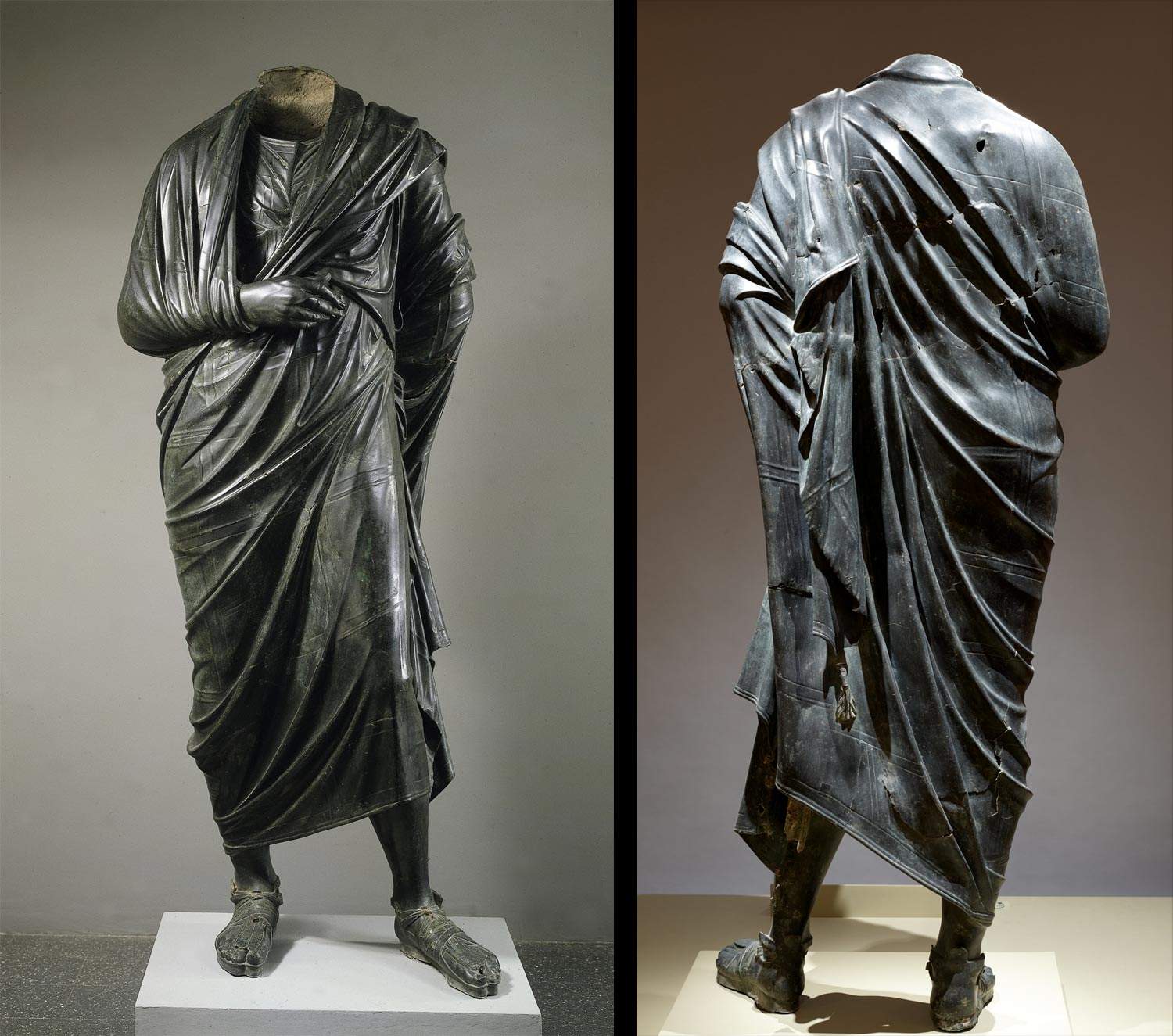The Manhattan District Attorney’s Office has ordered the seizure of an important headless bronze statue depicting the Roman emperor and philosopher Marcus Aurelius kept at the Cleveland Museum of Art. In fact, it is believed that the sculpture, acquired by the Ohio museum in 1986, came to the United States by illicit means from Turkey. The seizure was ordered as a result of investigations into antiquities looted specifically from Turkey, and the Associated Press broke the news.
The investigation focuses on the smuggling of looted antiquities from the site of Bubon, an ancient Asia Minor city north of Lycia near the country’s southwestern coast. The 1.90-meter-tall statue dates from 180-200 A.D. and, according to the district attorney’s office, would be worth $20 million. Before the seizure was ordered, the statue had already been removed from the halls two months ago, and the Cleveland Museum of Art itself changed the description of the work on its website, listing it generically as a “draped male figure,” thus removing references to Marcus Aurelius.
Turkey, for its part, has been trying to regain this sculpture since 2012, when the country issued a list of more than 20 works of objects in the Cleveland Museum’s collection that were believed to be the result of looting at Bubon and other archaeological sites in the 1960s (in fact, it is believed that the sculptures were discovered by villagers around Bubon before the authorities preservation authorities, and that the villagers themselves sold them to a merchant in Izmir, despite the fact that exports of antiquities to Turkey have been subject to a law since 1906 providing permission for the exit of goods of cultural interest): institute officials at the time responded that Turkey had not provided evidence to support the looting hypothesis. Now, however, no official notes are coming from the museum, but, the Associated Press also reports, a museum spokesman, Todd Mesek, said that the museum, without wishing to get into the merits of the affair itself, “takes issues of provenance very seriously and examines claims about objects in the collection carefully and responsibly.”
This is not the first time that the Manhattan District Attorney’s Office has seized an object believed to have come from Bubon: it had already happened in December 2022, when a bronze statue of Emperor Lucius Verus, also from Bubon, was seized from the collection of Shelby White, trustee of the Metropolitan Museum in New York. And even earlier, in December 2021, the same prosecutor’s office had returned to Turkey 28 objects seized from collector Michael Steinhardt. And now the Cleveland Museum of Art’s work may follow the same path.
 |
| U.S., Roman statue seized at Cleveland Museum of Art It was stolen in Turkey |
Warning: the translation into English of the original Italian article was created using automatic tools. We undertake to review all articles, but we do not guarantee the total absence of inaccuracies in the translation due to the program. You can find the original by clicking on the ITA button. If you find any mistake,please contact us.